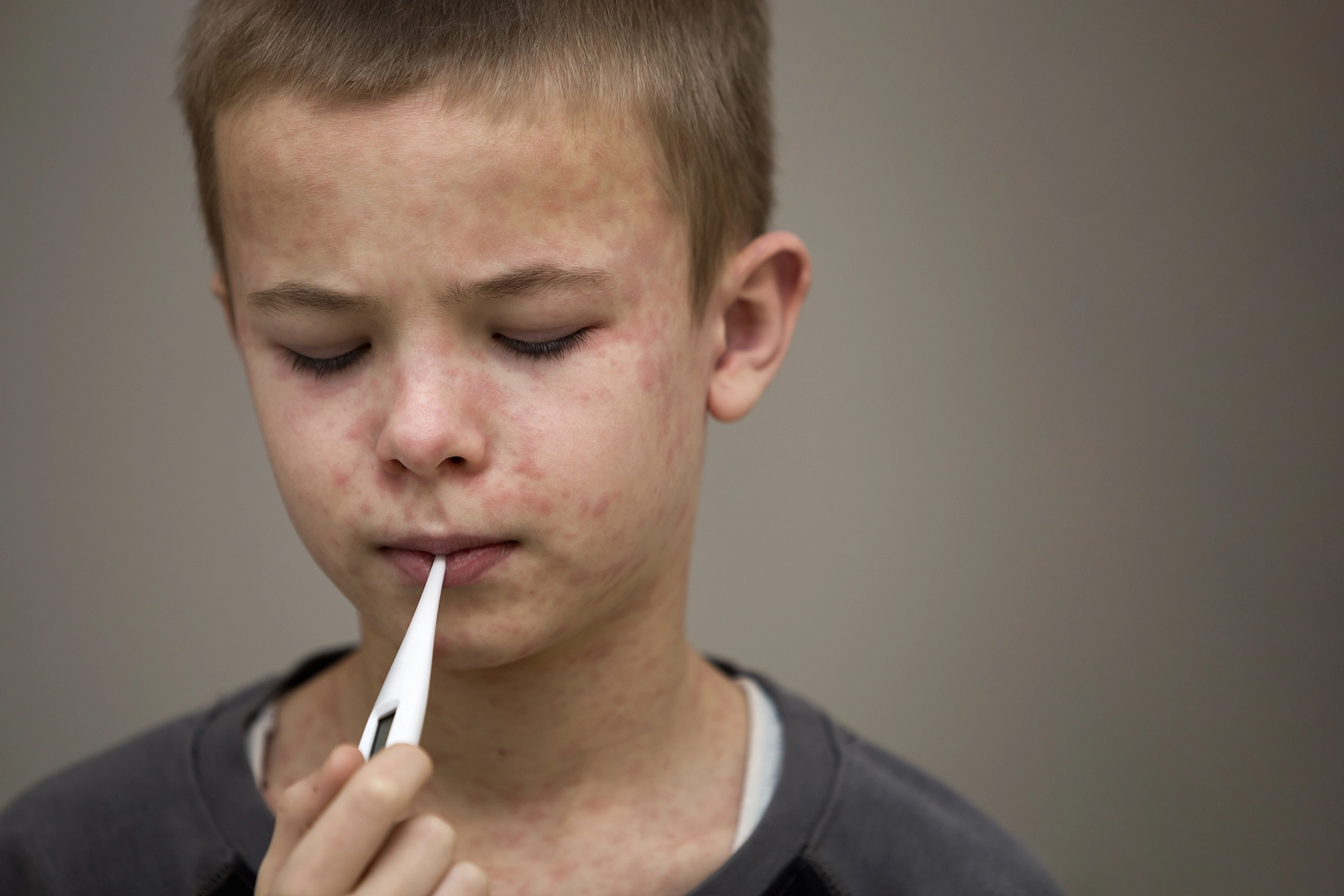Measles 101 for Parents: What You Need to Know

This year’s measles outbreak in pockets of the U.S. — including in Florida — has alarmed pediatric infectious disease physicians like Charles Mitchell, M.D. of the University of Miami Health System.
Measles was declared eliminated in the U.S. in 2000, but cases have started emerging recently among children who aren’t vaccinated.
“Eradicating a disease is an incredible accomplishment, and the data on the vaccine’s safety is overwhelming,” says Dr. Mitchell.
Most Americans are vaccinated for measles, but the disease is so highly contagious that herd immunity depends on a high vaccination rate of 95%. Herd immunity is achieved when a high enough percentage of the population is immune to infection, protecting those who are immunocompromised.
Three factors make measles particularly contagious:
- Measles is spread through respiratory droplets, which can remain suspended in the air for up to two hours after an infected person leaves.
- Anyone infected with measles has a high viral load, especially in the respiratory tract. Even a small amount of exposure can lead to infection.
- Infected individuals can spread the virus before even realizing they’re sick.
The only time Dr. Mitchell saw a measles outbreak was during his HIV research in Zambia in the 1990s. “One of the things they showed me was a measles ward. About 70% of the kids with measles were very sick. Many of those kids were co-infected with HIV, and they did not have access to the vaccine,” he says.
Signs and symptoms of a typical case of measles:
Measles is so rare in the U.S. that many clinicians and parents don’t recognize the signs when there is an outbreak. A typical case of measles begins with mild to moderate symptoms, which may seem like a common cold.
“Measles presents like many other viral illnesses,” Andrea Assante, M.D., says “You can see high fever, cough, runny nose, pink eye. Doesn’t that sound like a flu virus? On day three or four, you can also start to see a rash that starts on your head or face and spreads down to the rest of your body.
“Now, you’re contagious for about four days after the rash starts, but you’ve also been contagious four days before that rash even started,” she adds
The identifiable symptoms include:
- High fever: The initial symptom of measles is usually a high fever, which can reach 104°F or more. This fever often precedes the rash and may last 4 to 7 days.
- Three C’s: Cough, coryza (runny nose) and conjunctivitis (pink eye)
- Koplik’s spots: Two or three days after symptoms begin, tiny white spots may appear inside the mouth. These spots are a key diagnostic indicator of measles.
- Rash: The measles rash typically appears three to five days after the onset of fever. It begins as flat red spots that usually start at the hairline and spread downward to the neck, trunk, arms, legs and feet. Small raised bumps may also appear on top of the flat spots. The spots may become joined together as they spread from the head to the rest of the body.
- Additional symptoms: These can include a sore throat, sensitivity to light, muscle pain and general discomfort.
Most children recover from a case of measles, but one out of every 1,000 dies.
Doctors agree that the contagiousness of the disease needs to be understood by everyone.
“You can get it by coughing, by sneezing, through touching surfaces, but you can also get it in a contaminated airspace because measles can live in that space for two hours,” says Dr. Assante. “Measles can cause significant complications, like diarrhea and ear infections, and even pneumonia.”
Another can develop cephalitis, which can cause permanent brain damage. Children who are immunocompromised are at a higher risk of catching measles and then experiencing adverse effects. “If you have kids with measles go into an ER or doctor’s office and sit next to a child who is recovering from a transplant or undergoing chemotherapy, they can kill that child,” says Dr. Mitchell.
How to prevent infection
While eliminating measles in the U.S. a quarter century ago is a miracle of science, treatment for measles remains just as rudimentary as in the past. “The only thing we can do is prevent it, which we have done extremely well until recently, unfortunately,” says Dr. Mitchell.
The American Academy of Pediatrics recommends routine measles vaccination as part of the measles, mumps and rubella (MMR) vaccine at 12 to 15 months, with a second dose given at around 4 to 6 years. In the case of an outbreak or travel outside the U.S., babies can be vaccinated as early as six months. Maternal antibodies provide newborns with residual protection.
Adults who have not been vaccinated can be vaccinated at any time. Measles is more contagious in children, but it tends to be more severe in adults who do get infected –– with a higher rate of morbidity.
The CDC and American Academy of Pediatrics recommend that any child who has not been vaccinated for measles stay out of school until 21 days after the last case is identified with the outbreak.

UHealth patients: Check your child’s immunization records by logging into MyUHealth chart to verify if your child’s MMR status is up to date.
Wendy Margolin is a contributor for UHealth’s news service.
Tags: contagious disease, disease spread, Dr. Charles Mitchell, pediatric care in Miami
